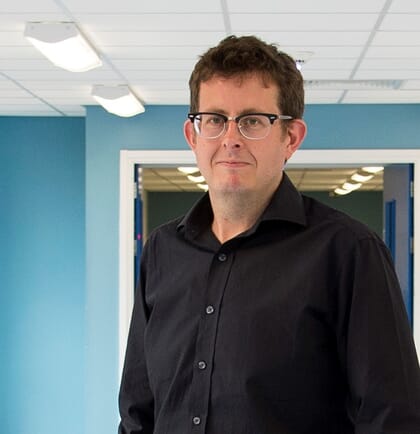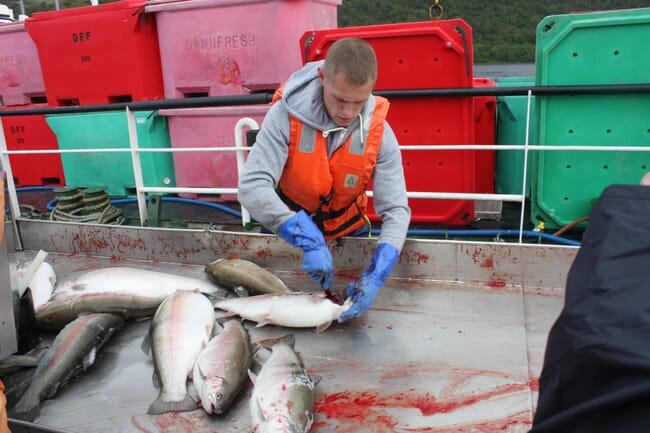What numbers of fish, crustacea and cephalopods are slaughtered each year?
The numbers of individual aquatic animals killed each year is enormous and very hard to quantify in terms of individual animals, suffice to say that estimates from the UN Food and Agriculture Organisation for aquaculture production in 2015 suggest that more than 76 million tonnes were produced (in comparison with around 93 million tonnes which were captured), of which 51.9 million tonnes were finfish and 7.4 million tonnes were crustaceans. This represents an enormous number of individual animals being slaughtered every year. Farming of cephalopods is on a smaller scale at present but is a growing area.
You can read more about the extent of the aquaculture industry in the recent HSA report – “Slaughter of Finfish Around the World”. But I should add that, whilst the HSA is concerned with the welfare of farmed species, it would also be very pleased if practical methods could be devised to humanely stun wild-caught aquatic species.

What are the usual methods used for slaughtering finfish?
Depending on the species and geographical location where they are slaughtered, fish may be stunned electrically or mechanically (by a blow to the head). They may also be killed using a range of less humane methods, such as asphyxiation out of water, exposure to carbon dioxide, exposure to very low temperatures on an ice-bed or bleeding without any form of stunning. Sadly, worldwide, most fish are still not humanely stunned.
Are there species in aquaculture which are particularly in need of improving their stunning methods?
There are many species, widely used in aquaculture, which do not currently have a validated humane stunning method. When allocating funding the HSA will be looking for proposals that develop a practical method, and which will benefit the largest number of animals. This latter, might be because the species is farmed in large numbers (grass carp; one of the most commonly farmed species worldwide for example) or because the species is of very high value (tuna, for instance) so that industry uptake of validated stunning methods would be more likely.
Do producers of some species have a better record than others?
Some of the most commonly farmed species in the West, such as Atlantic salmon and rainbow trout, are routinely stunned. We can certainly learn from the way these species are slaughtered on an industrial scale, but each fish species may well need different stunning methods and parameters. This is why the HSA is keen to develop or validate methods for those species where this hasn’t already been done, we probably can’t simply use the equipment used for one species for another, without at least some modification of the parameters or process used.
Are there any machines/methods currently in use that are considered particularly effective by HSA?
This is a difficult question to answer as the most effective or humane method depends on the species and circumstances at which slaughter occurs. Also, as I have suggested, it is not just the method, but also the parameters and implementation that are important. A major reason for supporting detailed research on species-specific methods is to show that the methods tested will be effective, humane and practical for a given species in a commercial situation.

© Rob Fletcher
Is the global shrimp farming industry in need of improving its stunning practices?
Like the other crustaceans, many shrimp are killed without stunning and the HSA would like to see these animals routinely stunned using a humane method.
Does the intelligence of cephalopod species make their humane slaughter an even more pressing welfare issue that, for example crustaceans?
Some cephalopods, especially octopus can appear very ‘intelligent’ and, while intelligence and capacity to feel pain are not necessarily linked, this together with other evidence has been used to give them the benefit of the doubt regarding sentience in some legislation. However, there is also a growing body of evidence which suggests that crustaceans such as crabs and lobsters have appreciable cognitive abilities and may also possess the capacity to have negative experiences like pain. As it is possible that both cephalopods and decapods may have the capacity to suffer, the HSA is keen to support the development of humane stunning methods to preclude the possibility of pain or suffering when all of these animals reach the point of slaughter.
Why has a larger proportion of the £1.7 million of funding been set aside for projects involving crustaceans and cephalopods?
When it comes to these species we know even less than we do for fish about the way their nervous systems may process pain or other negative experiences. Therefore, as well as the research to develop or test stunning methods the researchers may also need to do some fundamental scientific research into the cognitive abilities and function of the nervous systems of these species so that they can test whether the stunning methods are humane. The HSA wished to make sure that there was sufficient funding to allow both basic research and more applied development of practical stunning methods. The call for applications for a share of the funding was made recently and we encourage people and organisations to apply now.
Is improving the stunning methods likely to improve the end product quality as well as animal welfare?
Improvements to the slaughter and handling of fish can certainly improve the quality of the end product. Quality of the flesh can be affected both by injuries sustained during the slaughter process and by changes resulting from stress experienced by the animals before slaughter - so, good welfare also results in better quality. There can, however, be a tension between the humaneness of the stun and flesh quality. Higher frequency electrical stunning causes less damage to the flesh than lower frequencies but may be less effective at stunning fish. Animal welfare is extremely important but is it also important that any new stunning method produces flesh of an acceptable quality to the consumer. We hope that the methods developed using our funding will be both humane and produce products of high quality, an important part of the research will involve ensuring that the method is commercially viable as well as good for the welfare of the animals.
How closely has the HSA been involved with aquaculture/fisheries operators in the past?
The HSA aims to support innovative scientific research which improves the welfare of all livestock animals ‘beyond the farm gate’. We’re an independent charity which works to improve the welfare of food animals at the time of slaughter, but also during transport, marketing, and killing for disease control and welfare reasons.
We have a longstanding association with the aquaculture industry and has long recognised that farmed fish should be humanely stunned, just like terrestrial livestock. To support this aim the HSA has funded significant research efforts in this area and developed guidance for the industry on how to treat farmed fish humanely at the time of harvesting. For instance, in the 1990s the HSA supported research to develop a humane electrical stunning system for farmed trout. Over the years the charity has also produced an extensive range of guidance for the industry on issues such as the transport of farmed fish and the humane harvesting of fish.
The HSA also tries to encourage and recognise researchers who significantly improve the welfare of livestock at slaughter. For instance, the HSA’s Humane Slaughter Award, which recognises work which has resulted in significant advances in the welfare of livestock during transport, marketing and slaughter, or killing for disease control, was made in 2011 to Jeff Lines of Silsoe Livestock Systems and John Ace Hopkins of Ace Aquatec Limited for their work to develop and commercially implement humane electrical stunning systems for farmed trout.
Most recently, following on from an HSA meeting attended by researchers and representatives of the aquaculture industry held in 2014, the HSA has produced an extensive report on the slaughter of finfish around the world, which summarises the current extent of fish farming, the way those animals are slaughtered and goes on to make recommendations about how future developments - including scientific research - might improve the situation.


